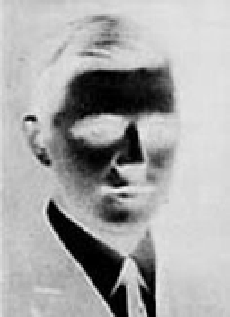Information Technology Reference
In-Depth Information
A shift cipher consists of a
key
or number, known only to sender and receiver,
which tells you how far to shift a second alphabet that is written under the
first one (
Fig. 12.11
). Alan Turing, with help from Polish intelligence and others
at Bletchley Park in the United Kingdom, built one of the first primitive com-
puters to break the German Navy's Enigma codes. To break the German High
Command's more complex Lorenz codes, Tommy Flowers built Colossus, argu-
ably the first serious digital computer. With the advent of modern computers,
cryptographers no longer needed to rely on a mechanical cipher machine to
do the encryption and decryption. A computer can do the work of a com-
plex cipher machine and still operate many times faster than any mechanical
device. Since computers operate on binary numbers, messages must first be
converted into a series of 1s and 0s according to some convention. There are
now standard ways to encode characters and words into binary numbers. Once
the message has been converted into a string of bits, encryption proceeds by
scrambling the bits according to a method specified by a
key
that is shared by
sender and receiver.
There are two main classes of cryptosystems, which are distinguished by
whether the encryption key is shared in secret or in public. Gilbert Vernam
(
B.12.5
) of AT&T proposed the one-time secret-key system in 1918. It is the only
cryptosystem that provides absolute security. However, the system requires a
key that is as long as the message and the keys must never be reused to send
another message. Spies received a fresh set of keys in the form of a tear-off
pad. After sending a message, the sender tore off the sheet with the used key
and destroyed it. For this reason, the system is sometimes known as a
one-time
pad
. When the Bolivian army captured the Marxist revolutionary Che Guevara
in 1967, they found he had a list of random numbers that allowed him to send
secret messages to Fidel Castro in Cuba. Guevara could do this securely over any
radio link because he and Castro were using Vernam's one-time pad system.
In cryptology, the three participants in any discussion of coded messages
are traditionally Alice, Bob, and Eve. Alice is the sender who wants to encrypt
a message and send it securely to Bob. Bob is the receiver, who gets the mes-
sage and wants to decrypt it and discover its meaning. Eve is a potential eaves-
dropper who wants to listen in and break the code. The one-time pad is secure
because Alice encrypts the message using a random number as long as the
message. Bob has the same key and can easily decrypt the message. The par-
ticular random number is only used once. Although this system is perfectly
secure in principle, its weakness in practice lies in the fact that Alice and Bob
have to share the same key and, since the keys are used only once, they need
a great deal of them. The keys have to be distributed to Alice and Bob using
some secure method, such as delivery by courier or a personal meeting. During
World War II, the Russians foolishly reissued some one-time pads. This careless-
ness allowed U.S. cryptanalysts to decrypt a large number of previously unde-
cipherable messages that they had intercepted over the years. This large-scale
decoding effort was code-named the Venona project (
Fig. 12.12
). It was tran-
scripts from this project that identified the atomic spy code-named CHARLES
as the Los Alamos physicist Klaus Fuchs.
The weakness of secret-key encryption is the problem of distributing
the keys safely. During World War II, the German military had to distribute
Fig. 12.11. Cipher disk invented by the
Renaissance artist Leon Battista Alberti
(1404-72). The brass inner disk can be
rotated to align its letters with the let-
ters of the outer circle.
B.12.5. Gilbert Vernam (1890-1960)
came up with the idea of unbreak-
able encryption using so-called
one-time pads
of secret code numbers.
The system was used by Che
Guevara to communicate with Fidel
Castro in Latin America.


Search WWH ::

Custom Search